Freshmen have been excluded from these previews, as we'd like to wait and see what they have to offer on the NCAA level before we come to any long-term conclusions.
-Top 20 Prospects in the Big Ten
-Top 25 Prospects in the ACC
-Top 15 Prospects in the Big 12
-Top NBA Draft Prospects in the Pac-12, Part One (#1-5)
#6 Trent Lockett, 6-5, Junior, SG/SF, Arizona State
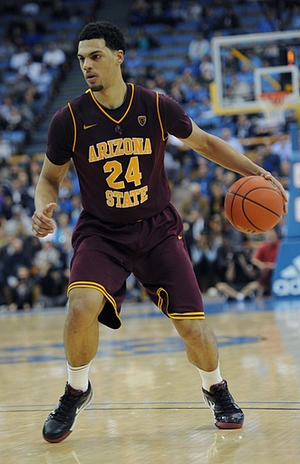
Jonathan Givony
2010-2011 was a difficult season for Arizona State, as the team finished in last place in a weakened Pac-10 conference. One thing Sun Devil fans could be encouraged by was the play of sophomore Trent Lockett, who emerged as their leading scorer and was named a second-team All-Pac-10 selection.
Standing somewhere between 6-4 and 6-5, Lockett has average size for an NBA shooting guard, but possesses a strong frame and very good athleticism. He is one of the most explosive players in the Pac-10, capable of blowing by opponents with an excellent first step and finishing above the rim in impressive fashion.
On an Arizona State that operated at one of the slowest tempos in the NCAA, Lockett played an important role as their best athlete and shot-creator. He is very aggressive looking to get to the basket, particularly in transition, but also in the half-court. He gets to the free throw line at a very solid rate in turn, and converts an excellent 54% of his 2-point attempts.
Not a particularly prolific outside shooter, just 11% of Lockett's field goal attempts came from beyond the arc last year, as he much preferred to drive to the basket using his quick first step, polished footwork and strong frame.
He shows the ability to drive and finish with either hand, and rarely looks out of control with his forays to the rim, sporting a positive assist to turnover ratio, a testament to his strong feel for the game. Nevertheless, he still has room to improve on his ball-handling ability and all-around polish, as he does not appear to be a finished product at this stage.
An area where Lockett will be expected to show improvement this season is as a jump-shooter. He only converted 32% of his 3-pointers last season, taking just over one attempt per game. His shooting mechanics are not broken, but are a bit rigid, while he also shows just average touch.
Lockett was, interestingly enough, both more prolific and accurate shooting the ball off the dribble last year than with his feet set. He creates good separation with the nice elevation he gets here in the mid-range areaa weapon he can continue to hone down the road.
On the other end of the floor, Lockett is a bit harder to evaluate, as his team uses zone defenses almost exclusively. Nevertheless, there are some things to take away from his play here. For one, he shows a very high intensity level, moving his feet constantly and doing a nice job contesting shots. His lateral quickness is very good, and that, coupled with his strong frame, gives him a good foundation to build off. Because of how undersized Arizona State is, Lockett is occasionally asked to spend time guarding opposing big men, something he obviously struggles with due to his lack of size.
Lockett is a pretty anonymous name to most casual college basketball fans outside the Pac-12, but that could very well change this year. His athleticism, coupled with his effort level and shot-creating ability make him a pretty intriguing prospect. The fact that he was named a Pac-10 1st team All-Academic selection doesn't hurt either. If he can help his team win a few more games this season, he'll likely garner plenty of attention.
#7 Jared Cunningham, 6-4, Shooting Guard, Junior, Oregon State
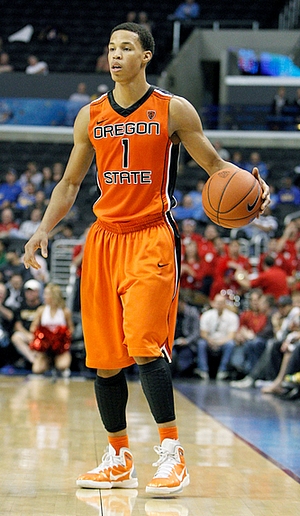
Joseph Treutlein
After an underwhelming freshman campaign, Jared Cunningham more than doubled his scoring production as a senior, leading his team with 14.2 points per game. Playing on a dismal Oregon State team (11-20 overall record last season), Cunningham tends to see a lot of defensive attention from the opposition, but his skill set is still fairly raw for someone who is his team's offensive focal point.
Standing 6'4 with a wiry strong frame and very good length, Cunningham has good fluidity, excellent quickness and some nice bounciness to his movements, and is a pretty impressive athlete overall. Still just 20 years old and not necessarily physically filled out, he may not have peaked with his athleticism yet and could improve as he continues collegiate level strength training.
Looking at Cunningham's offensive game, despite being his team's leading scorer, he's not a finished product by any means, doing the majority of his work getting out in transition, spotting up, and cutting off the ball.
In the half-court, Cunningham shows a very high motor and very good awareness, constantly being in motion off the ball, moving to open spots behind the arc, and reading lanes well to attack on backdoor cuts to the basket. He clearly shows a developed basketball IQ on this end of the floor and appears to have the mentality to excel more as a role player in the long term, something that will likely be necessary at the next level. Cunningham's savvy allowed him to get to the free throw line at an outstanding rate last year, trailing just Derrick Williams in the Pac-10 in that category.
Cunningham's most developed skill at this point is likely his outside shot, where he shows very good mechanics but just decent results at 36% from behind the arc on only 2.5 attempts per game. He's very good when spotting up, but has some trouble pulling up off the dribble, not really having the ball-handling to easily get separation on his man.
In terms of attacking the basket from isolations, Cunningham shows similar issues, having very little in terms of advanced ball-handling and relying mostly on straight-line drives, which somewhat negates his excellent quickness. Cunningham doesn't have the size or strength to finish at a high rate around the basket yet, making it difficult at times to convert the opportunities he creates for himself off the dribble. Despite his prowess in transition, he only made 47% of his 2-point attempts last year, mainly because of his issues finishing around the basket in the half-court.
Getting out in transition is another area Cunningham excels, being very aggressive leaking out and even in creating his own opportunities with an excellent 2.8 steals per game. He shows good quickness and goes to the basket hard in these situations, elevating impressively when he has momentum, finishing consistently at the rim.
On the defensive end, Cunningham really shines in using his length and good hands to pick off balls both on and off the ball, playing the passing lanes especially well. He's aggressive looking for turnover opportunities and creates a lot of one-man fast breaks for himself. On the other hand, Cunningham tends to show some struggles defending in isolations, not having the greatest lateral quickness and being prone to play off his man or get faked hard off the ball. He has occasional flashes drawing charges or sticking with his man on drives while using his length to contest the ball, but needs to be much more consistent putting in the work here.
Looking forward, Cunningham has a decent groundwork of skills for a potential role playing shooting guard at the next level, along with average size and very good length. Becoming more of a three-point marksman and maximizing his athleticism and isolation defense would go a long way for his stock, and those are all areas he has potential with. Stuck on a weak team without much help on the horizon, Cunningham will have every opportunity to elevate his game, along with plenty of adversity to learn from.
#8, Reeves Nelson, 6-8, Power Forward, Junior, UCLA
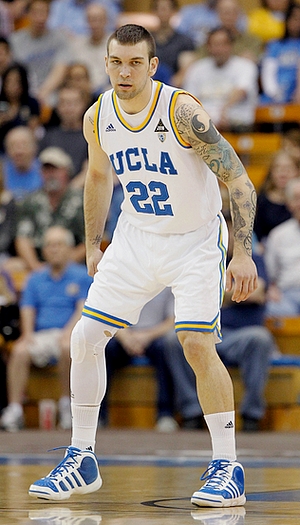
Walker Beeken
After a solid freshman season, UCLA's Reeves Nelson continued to show development as a sophomore, leading a talented but inconsistent Bruin team in scoring and rebounding, thanks to a more polished offensive game and an improved body. Nelson will look to build on that success in his junior season to work his way more firmly onto the NBA draft radar.
The most obvious knock on Nelson as an NBA prospect will continue to be his lack of size and length at the power forward position, but he has made improvements in his body, looking much leaner as a sophomore, and in turn, looking quicker and more explosive on the court.
We noted that becoming more of a force on the boards was something for him to work on as well, and he rebounded at a higher rate last season, going from 9.9 to 11.5 rebounds per forty minutes pace adjusted, which places him towards the middle of the pack of the power forwards in our database.
Offensively, with big man Joshua Smith added to the picture last season for the Bruins, Nelson saw less post touches and diversified his offensive game, showing the ability to step out on the perimeter and attack off the dribble on occasion. With his trimmer physique, Nelson showed a more explosive first step to get by his man, as well as the same knack for scoring around the rim that we saw from him as a freshman. His aggressive mentality and scoring instincts continue to allow him to find ways to put the ball in the basket at the college level, but may be something that doesn't translate as well against the taller, longer defenders he'd face in the NBA.
After hardly attempting any jump shots as a freshman, Nelson slowly started incorporating a jumper into his game last season, shooting about one per game and connecting on about 33% of them. He still has more work to do in becoming a more consistent shooter and expanding his range, but it was encouraging to see the signs of improvement last season. His effectiveness scoring in the post and around the basket would likely be limited against NBA caliber big men, so becoming a more proficient jump shooter could be a big factor in his professional potential.
Defensively, Nelson's leaner body clearly helped his lateral quickness, and he did a much better job defending on the perimeter and getting up in the air to challenge shots. Around the basket, Nelson utilizes his strong body and toughness to fight for position, but his lack of size and length is difficult for him to overcome at times as players are sometimes able to score up and over him.
Overall, Nelson still has work to do to establish himself as a legitimate NBA draft prospect. The improvements he made with his body have been encouraging, but his lack of size and length at the four spot will make it an uphill battle. If he can continue to make strides with his skill level over his time at UCLA, he will be a player that will be tough to ignore, though, as teams are always looking for toughness, and Nelson is the type of player that won't back down from anybody.
#9 Abdul Gaddy, 6-3, Junior, Point Guard, Washington
Gaddy missed a good chunk of last season with a knee injury. We'll wait and see how he bounces back this year before attempting to add to his already comprehensive profile.
#10 Kevin Parrom, 6'6, Junior, Small Forward, Arizona
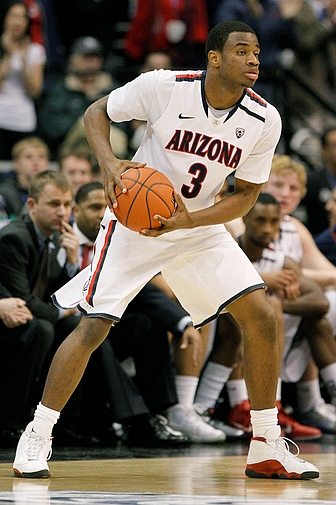
Matt Williams
Kevin Parrom didn't have a breakout year on a national level as a sophomore, but he made some significant strides in his development that are certainly worth noting. Despite being in the news recently after being shot above the knee while visiting family in the Bronx, Parrom is already back in Arizona and should play a key role for the Wildcats this season. With Derrick Williams out of the picture, Parrom will have a chance to take a big step forward this season and could emerge as a prospect with continued development.
Standing 6'6 with a solid wingspan and a frame that has the potential for growth, Parrom has nice size for the wing position at the next level. While he isn't a bad athlete, the South Kent product is not overly explosive with his first step or as a finisher around the rim. He relies on his long strides to turn the corner when he slashes through the paint and is generally a below-the-rim player making his athleticism less than ideal for the next level.
The most significant development in Parrom's game from his freshman to sophomore year was the improvement of his jump shot. Looking far more comfortable with his mechanics and follow-through in his second season with Wildcats, Parrom went from being a liability when spotting-up to knocking down 42% of his attempts from beyond the arc last season. Considering that nearly two-thirds of his shot attempts are jumpers, this was a necessary step for the rising junior.
The young wing's improvement as a shooter did wonders for the rest of his game. While he is not one to blow-by his man off the dribble, Parrom is smooth with the ball in his hands and uses subtle changes of direction to make plays in traffic around the rim. He could stand to improve his ball-handling ability, especially with his left hand, but can take what defenders give him. He finished at a 64.5% rate last season according to Synergy Sports Technology, and while Parrom is by no means a dangerous one-on-one threat, he makes the most of his trips inside the arc.
His ability to finish as efficiently as he does inside is indicative of his improved decision-making and feel for the game. Parrom takes a contested jumper from time to time, but for the most part, is a savvy offensive player. He seldom appears to be in a rush, is willing to slow down and let the game come to him, and proves to have very good vision as a passer. Parrom is a candidate to pick up some of the slack left behind by Derrick Williams, and will need to continue improving his perimeter shot and floor game to make the most of his opportunity to show what he can do offensively.
On the defensive end, Parrom lacks the lateral quickness to deny penetration consistently, but not for lack of trying. The young wing shows fairly consistent intensity, and his solid steal-rate is a byproduct of the way he sticks with plays. Parrom did a better job last season not using his hands when he got beat, but needs to continue improving his fundamentals to compensate for his weaknesses. He's already a fairly good rebounder for his position and a solid team defender which are both good signs.
While Parrom may not have the upside of some of the other players in our PAC-12 rankings, he's a solid player who could emerge as a niche prospect should he continue getting better. He took a big step forward last year, and as long as he's healthy again this year, could be in position to make similar gains.













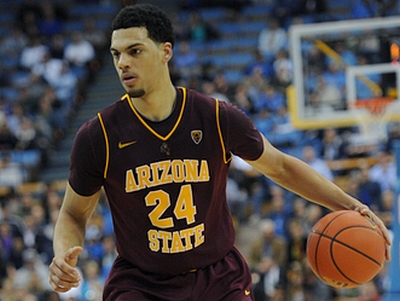




















Comments